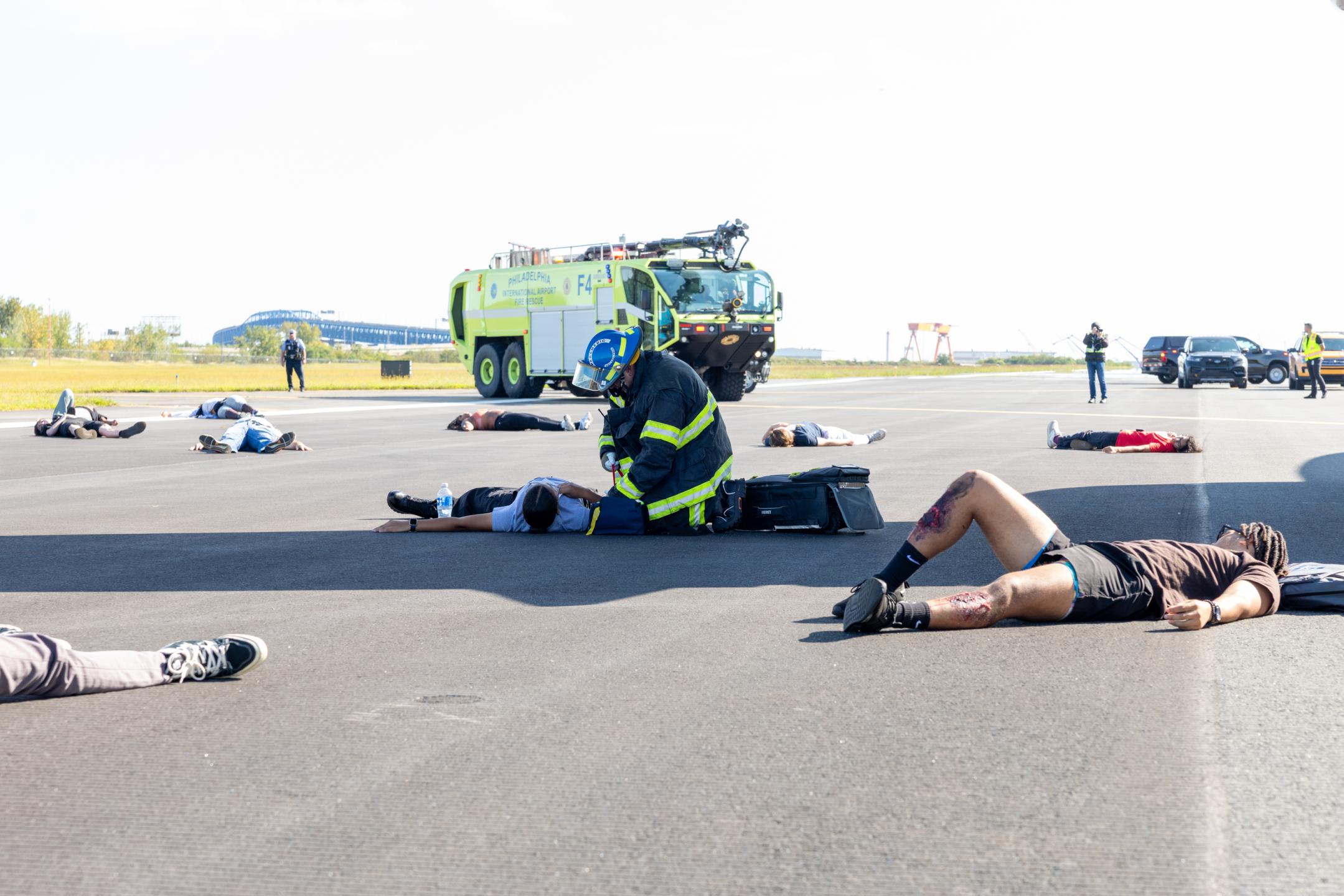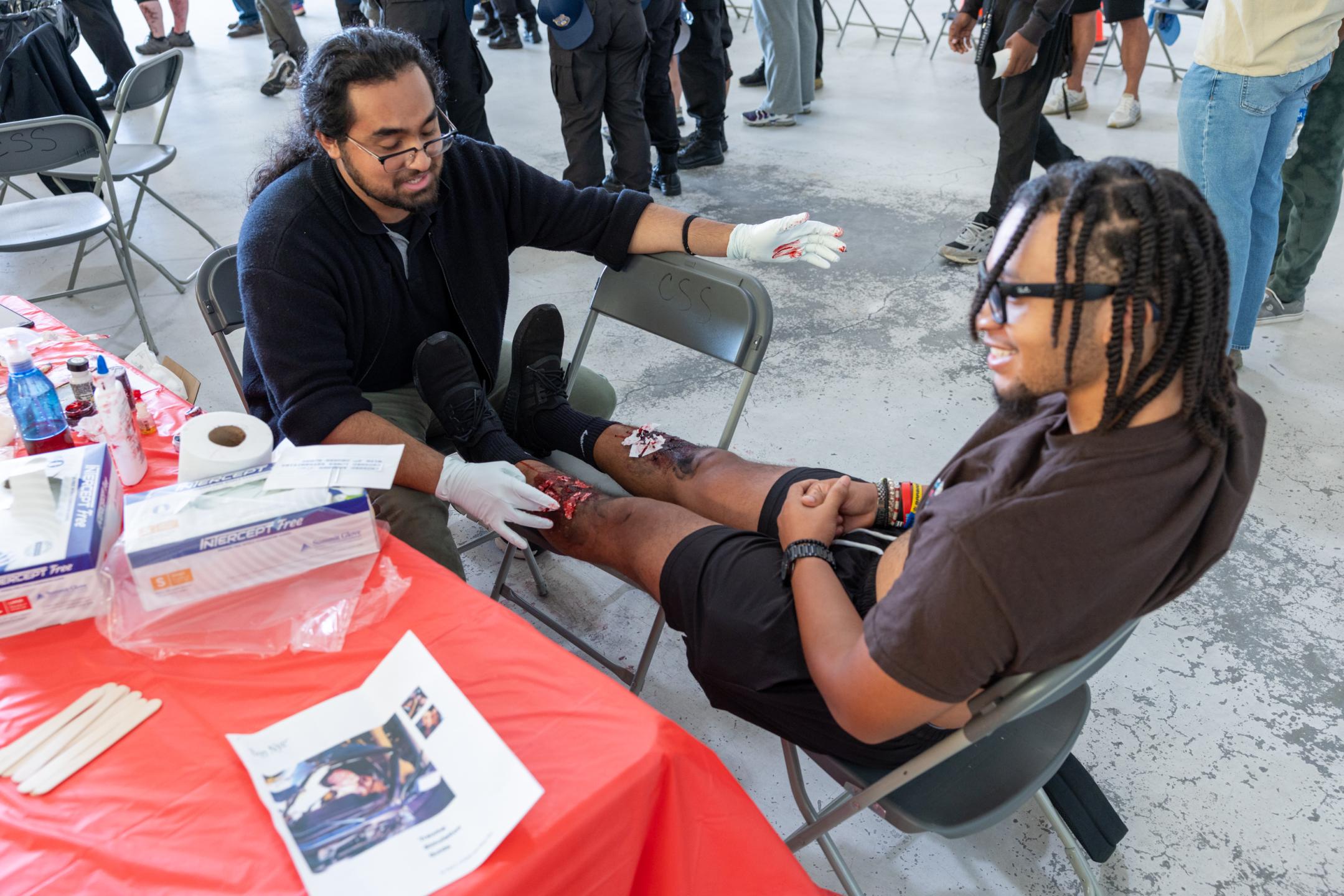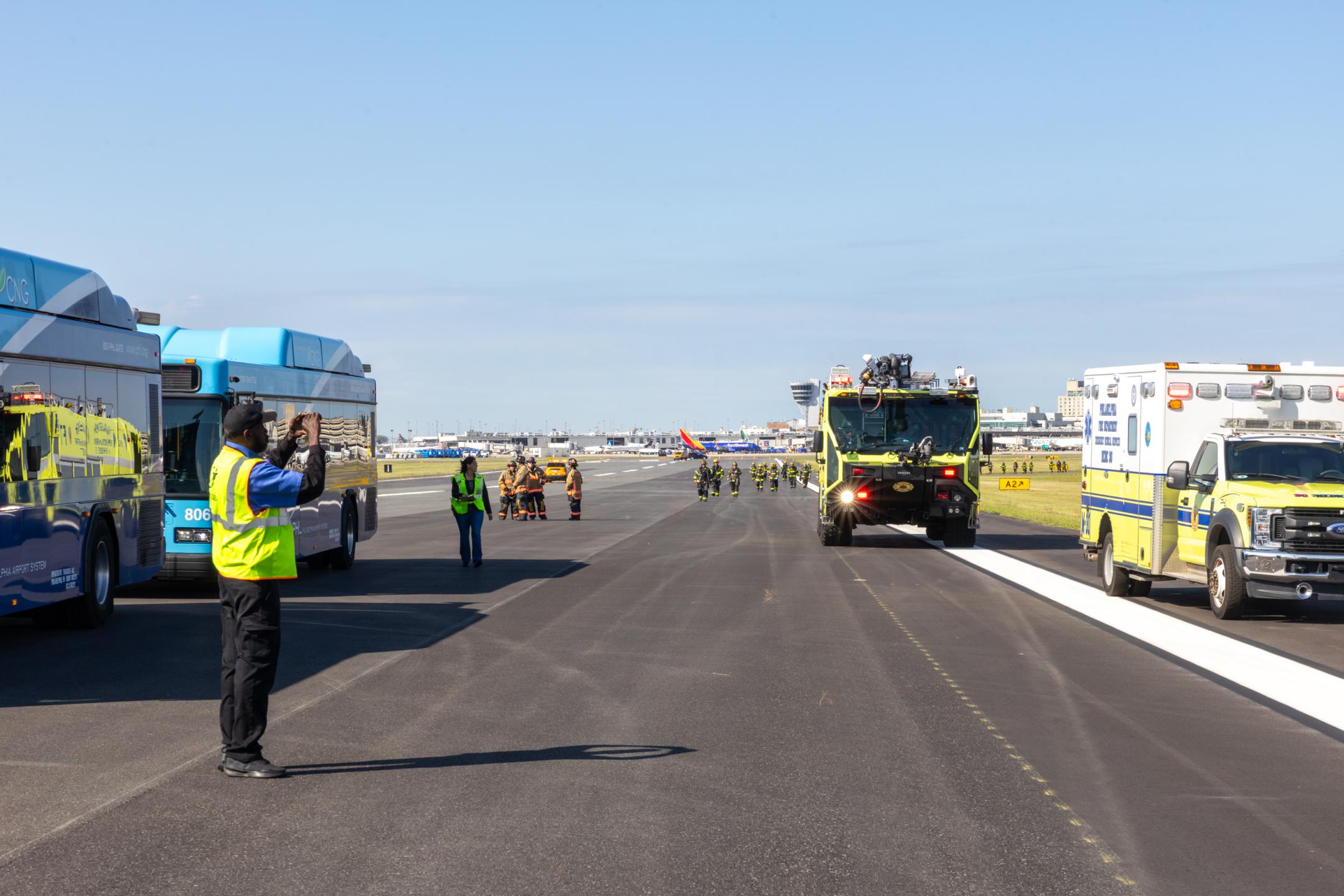 A major accident on the airfield - it’s the call airport teams and first responders never want to receive but something they have to answer. On Saturday, September 20th, Philadelphia International Airport (PHL) held a large-scale Emergency Preparedness Exercise (EPEX) to practice their response to an FAA-required simulated mass casualty event.
A major accident on the airfield - it’s the call airport teams and first responders never want to receive but something they have to answer. On Saturday, September 20th, Philadelphia International Airport (PHL) held a large-scale Emergency Preparedness Exercise (EPEX) to practice their response to an FAA-required simulated mass casualty event.
At 10 am, a call went out over the radio: a Boeing 737 with 101 passengers and crew on board carrying 41,800 pounds of fuel was forced to abort its takeoff from PHL and crash-landed near the end of runway 26. Flames and numerous injures were reported. An Alert 3 for a major incident was put in place.
First on the scene was PHL’s Aircraft Rescue and Firefighting (ARFF) unit from Engine 78, followed by the Philadelphia Police Department's Airport Division and Airport Operations. Upon arrival, crews accessed the situation: ARFF worked to contain the fire and EMS helped victims. Additional support arrived from other Philadelphia Fire Department and Philadelphia Police units and local emergency teams, including the Tinicum Township Fire Department and a non-municipal ambulance. The joint effort of local agencies from surrounding communities helps ensure a coordinated and effective response in case of emergencies, while at the same time strengthening preparedness for unforeseen situations.
 “The EPEX drill is a necessary tool to understand the strengths and weaknesses of our airport resources in dealing with a large-scale aircraft emergency,” said Engine 78 Chief Kamau Bright.
“The EPEX drill is a necessary tool to understand the strengths and weaknesses of our airport resources in dealing with a large-scale aircraft emergency,” said Engine 78 Chief Kamau Bright.
To make the exercise feel as real as possible, over 100 volunteers acted as injured passengers and assisted with EMS training. Some were members of the public, and others came from groups like the Philadelphia Police Explorers, Temple University students and the local EMS community. A special team of medical professionals also attended the drill to observe the mass casualty and triage process.
The goal of EPEX isn’t just to practice but also to learn. Before the exercise, each participating agency sets its own goals that focus on specific elements of the drill. Representatives from organizations such as the FAA, American Red Cross, City of Philadelphia Office of Emergency Management, airlines, and the Department of Aviation are assigned to fire crews, medics, and airport staff to observe and review their performances. During and after the drill, observers share their feedback, which is compiled into an after-action report that reviews how well each goal was met and highlights areas for improvement. Based on this report, PHL will update its emergency plans to be prepared for possible emergencies.
each goal was met and highlights areas for improvement. Based on this report, PHL will update its emergency plans to be prepared for possible emergencies.
“EPEX gives all of our emergency teams and partner organizations a chance to come together and practice for a situation we hope never actually happens,” said PHL Chief Operations Officer Greg Phillips. “I’m proud of how collaborative and capable each agency was in executing this exercise. It’s all about being prepared for anything.”






